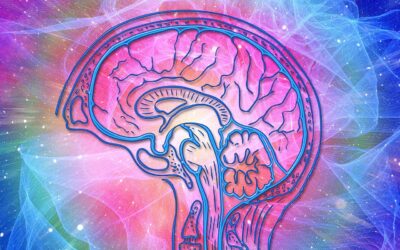AI-Powered Forecasting: Predicting Demand in Volatile Markets

The ability to predict demand is crucial for businesses striving to stay competitive. Traditional methods of forecasting, which rely on historical data and standard statistical techniques, often fall short when markets are volatile. This is where AI-powered forecasting comes into play. With its ability to analyze vast amounts of data, identify patterns, and adapt to changing conditions, artificial intelligence (AI) offers a more accurate and dynamic approach to predicting demand, even in turbulent market environments.
This article explores how AI-powered forecasting is revolutionizing demand prediction, the challenges of forecasting in volatile markets, and the benefits AI brings to businesses looking to navigate uncertainty more effectively.
Understanding AI-Powered Forecasting
At its core, AI-powered forecasting involves using advanced algorithms, machine learning (ML), and big data analytics to predict future outcomes more accurately than traditional forecasting methods. While conventional models rely on limited datasets and linear assumptions, AI can process and learn from massive amounts of structured and unstructured data, including market trends, consumer behavior, social media signals, and external factors like geopolitical events or weather conditions.
AI’s predictive power stems from its ability to analyze these datasets in real time and adapt its predictions as new data becomes available. This makes AI-powered forecasting particularly effective in volatile markets, where conditions can change rapidly and unpredictably. By continuously updating and refining predictions, AI helps businesses stay ahead of market fluctuations and anticipate demand with greater precision.
The Challenges of Predicting Demand in Volatile Markets
Volatile markets—those characterized by rapid and unpredictable changes—pose significant challenges for demand forecasting. Factors such as economic uncertainty, shifting consumer preferences, supply chain disruptions, and external shocks (e.g., natural disasters, pandemics) make it difficult for businesses to accurately predict future demand. Traditional forecasting models, which often rely on stable historical data and assume that future trends will follow past patterns, struggle to account for these complexities.
In volatile markets, demand can spike or plummet with little warning, leaving companies unprepared to meet customer needs. This can lead to a host of problems, including:
- Overstocking or understocking: Businesses may either stock too much inventory, resulting in excess costs, or too little, leading to missed sales opportunities.
- Supply chain inefficiencies: Inaccurate forecasts can create disruptions in the supply chain, making it difficult to optimize production and distribution processes.
- Lost revenue: Failing to anticipate demand fluctuations can result in lost sales or increased costs, damaging both profitability and customer satisfaction.
AI-powered forecasting addresses these challenges by using more sophisticated methods that are better equipped to handle the uncertainty and complexity of volatile markets.
How AI Enhances Demand Forecasting
AI enhances demand forecasting by integrating a wide range of data sources and leveraging advanced techniques like machine learning, neural networks, and natural language processing. Here’s how AI transforms the forecasting process:
1. Data Integration from Multiple Sources
AI-powered forecasting systems can gather and process data from a wide variety of sources, both internal and external. This includes traditional sales and inventory data, but also extends to external factors like:
- Macroeconomic indicators: Interest rates, inflation, and unemployment figures can impact consumer purchasing power and market demand.
- Consumer sentiment: AI can analyze social media, reviews, and surveys to gauge consumer sentiment and predict shifts in demand.
- Weather patterns: For industries like agriculture, retail, and energy, weather conditions can heavily influence demand. AI can incorporate real-time weather data to make more accurate predictions.
- Geopolitical events: Political instability, trade policies, and international relations can disrupt supply chains and influence consumer behavior. AI can track these developments and factor them into its forecasts.
By integrating these diverse data streams, AI provides a more comprehensive and holistic view of the factors driving demand, allowing businesses to anticipate changes more effectively.
2. Advanced Machine Learning Models
Unlike traditional forecasting models, which are often static and linear, machine learning models continuously evolve and improve as they process more data. Supervised learning algorithms can be trained on historical data to predict future demand, while unsupervised learning can identify hidden patterns and correlations in complex datasets.
Machine learning models can detect nonlinear relationships between variables, meaning they can uncover insights that traditional models might miss. For example, a machine learning model might detect that a slight increase in social media mentions of a particular product leads to a significant rise in demand within a specific region. These subtle patterns can be crucial in volatile markets, where demand drivers may not follow straightforward, predictable trends.
3. Real-Time Forecasting and Adaptability
One of the key advantages of AI-powered forecasting is its ability to make predictions in real time. Traditional models may be updated periodically (e.g., monthly or quarterly), but AI systems can process new data continuously and adjust their forecasts accordingly. This real-time adaptability is critical in volatile markets, where demand conditions can shift rapidly.
For example, during a sudden supply chain disruption or a spike in raw material costs, AI can quickly adjust demand forecasts and provide businesses with the insights needed to make timely decisions. This allows companies to respond proactively rather than reactively, minimizing potential losses.
4. Scenario Analysis and Simulations
AI-powered forecasting tools often incorporate scenario analysis and what-if simulations, allowing businesses to explore multiple potential futures and plan accordingly. For instance, an AI model could simulate how different variables—such as a new competitor entering the market, a change in consumer preferences, or a sudden economic downturn—might affect demand. By running these simulations, companies can prepare for a range of possible outcomes and develop contingency plans for each.
This level of foresight is particularly valuable in volatile markets, where uncertainty is the norm. AI helps businesses make informed decisions by providing actionable insights into how various scenarios could impact demand, enabling them to allocate resources more efficiently.
Benefits of AI-Powered Demand Forecasting
The use of AI in demand forecasting provides businesses with several key advantages:
1. Improved Accuracy
AI’s ability to process vast amounts of data and identify subtle patterns leads to more accurate demand forecasts. This is especially important in volatile markets, where traditional forecasting methods often fall short. With AI, businesses can reduce forecasting errors, leading to better inventory management, production planning, and financial performance.
2. Faster Decision-Making
Real-time data analysis and adaptable models allow companies to make faster, more informed decisions. In fast-changing environments, this speed can be the difference between seizing a new opportunity and missing out. AI empowers businesses to react quickly to market shifts, enabling them to capitalize on emerging trends or mitigate potential risks.
3. Enhanced Customer Satisfaction
Accurate demand forecasting helps businesses ensure they have the right products available at the right time, reducing stockouts and overstock situations. This leads to improved customer satisfaction, as businesses can consistently meet consumer demand without delays or shortages.
4. Cost Efficiency
By optimizing inventory levels and improving supply chain efficiency, AI-powered forecasting can lead to significant cost savings. Businesses can reduce the need for emergency stock replenishments, lower carrying costs, and streamline production schedules, resulting in a more efficient and cost-effective operation.
5. Resilience in Uncertain Times
Volatile markets require businesses to be more resilient and adaptable. AI-powered forecasting provides the tools needed to navigate uncertainty by offering a deeper understanding of market dynamics and equipping businesses with the insights to adjust their strategies in real time. This resilience is crucial for long-term success in unpredictable environments.
Real-World Applications of AI-Powered Forecasting
Several industries are already leveraging AI-powered forecasting to predict demand in volatile markets. Some examples include:
- Retail: AI helps retailers optimize inventory by analyzing consumer behavior, sales trends, and external factors like seasonality or economic shifts. This allows them to better manage supply chains and reduce excess inventory or stock shortages.
- Manufacturing: Manufacturers use AI-powered demand forecasting to optimize production schedules, minimize waste, and adjust to fluctuating market conditions. By predicting demand more accurately, they can reduce production costs and improve efficiency.
- Energy: In the energy sector, AI is used to predict demand based on factors like weather conditions, economic activity, and regulatory changes. This helps energy companies balance supply and demand, reduce waste, and ensure the reliability of their services.
- Healthcare: The healthcare industry uses AI to forecast demand for medical supplies, hospital beds, and treatments, especially during unpredictable events like pandemics. This allows healthcare providers to prepare for surges in demand and allocate resources more effectively.
The Future of AI in Demand Forecasting
As AI technology continues to evolve, its role in demand forecasting will only grow. The integration of advanced AI techniques like deep learning, combined with IoT (Internet of Things) data and edge computing, will further enhance forecasting capabilities. Businesses will have access to even more granular data, allowing for hyper-accurate demand predictions at a local or even individual level.
Additionally, collaborative AI systems that integrate data from multiple stakeholders—suppliers, manufacturers, retailers, and consumers—could create a more interconnected and resilient supply chain, capable of adapting to market changes in real time.
Embracing AI for a Competitive Edge
In an era of increasing market volatility, AI-powered forecasting offers businesses a competitive advantage by providing more accurate, adaptable, and data-driven insights into future demand. By embracing AI, companies can not only navigate uncertainty but also thrive in it, making smarter decisions that enhance efficiency, reduce costs, and improve customer satisfaction. As the technology continues to advance, AI-powered forecasting will become an essential tool for any business looking to stay ahead in today’s dynamic global marketplace.





